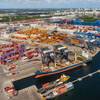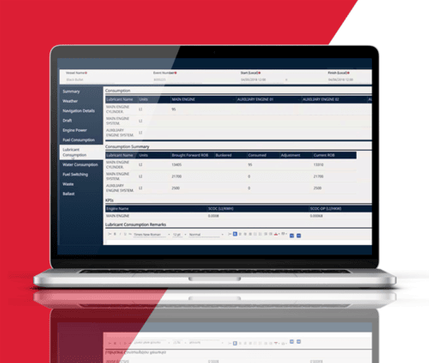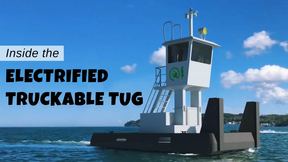Container Ship Supply and Demand to Tighten
BIMCO has released its Container Shipping Market Overview & Outlook September 2024 with Niels Rasmussen, BIMCO’s Chief Shipping Analyst, highlighting that the disruption caused by ships being rerouted via the Cape of Good Hope remains the key ship demand driver.
As a result, ship demand is forecast to grow three times faster than cargo volumes in 2024. Without it, ship supply would have grown faster than ship demand but instead BIMCO expects that the supply/demand balance will on average be tighter during 2024 than during 2023.
“During the second half of 2024, we expect ship demand growth to weaken due to weaker cargo volume growth. On the other hand, supply will increase as the fleet continues to grow and so the supply/demand balance during the fourth quarter could approach the levels seen during 2023.
“However, ship demand could end higher than projected during late 2024 and early 2025 due to disruptions caused by the redeployment of carrier alliances’ services, particularly if negotiations between the International Longshoremen’s Association (ILA) and the United States Maritime Alliance (USMX) are unsuccessful and lead to dockworker strikes in all US East and Gulf Coast ports starting on 1 October.”
Spot freight rates from Shanghai (SCFI) peaked in early July but have since declined more than 30% due to lower cargo volumes and an increase in capacity deployed in some trade lanes.
Average export freight rates from China (CCFI) peaked slightly later in July and have decreased only 15% since then. Despite time charter rates and the CCFI normally being very closely correlated, time charter rates have yet to react significantly to freight rate decreases because ship availability remains low and most continue to be renewed or find new time charter contracts.
“As we move into the fourth quarter and into 2025, we expect further freight rate reductions and beginning time charter rate weaknesses, particularly if ships can return to normal routings,” says Rasmussen.
The stable time charter rates have supported equally stable prices for second-hand ships and their development should remain aligned when the forecasted weaker supply/demand balance begins to impact time charter rates negatively.
On the strength of renewed container contracting, the global order book has increased another 5% during the last three months, leading to further price increases for newbuilds. The order book for bulk carriers and crude tankers remains low relative to the size of the fleets. Unless renewed interest in adding orders for these ship types underpins further expansion of the global order book, BIMCO expects prices to begin to fall along with the size of the order book.
Recycling prices are being pressured by cheap Chinese steel exports, and unless a pick-up in Chinese steel demand reduces those exports, BIMCO expects low prices to continue.
“Much uncertainty remains in our forecast, not least because much of the demand side development is directly dependent on the current and potential future disruptions.
“Risks to economic growth naturally also remain but at least appear less of a concern because lower inflation has allowed both the Federal Reserve and the European Central Bank to begin interest rate reductions.
“The result of the presidential election in November will meantime dictate US economic and trade policy from 2025 onwards. Should Donald Trump win a new term, his plans to impose new high import tariffs could disrupt US imports while increasing cost of living for consumers.”













